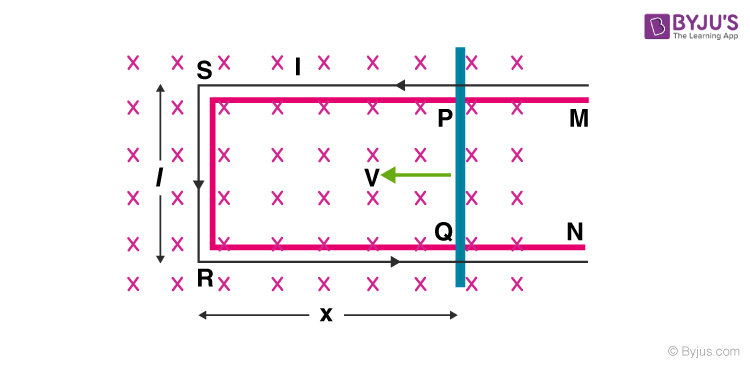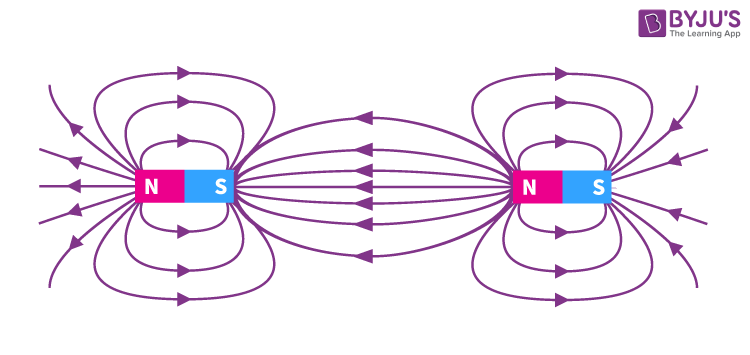|
|
|
| Q1 |
What is a force?
A force is usually defined as an influence that can alter the motion of a
body. A force can cause a body with mass to alter its velocity.
|
| Q2 |
What is a magnetic field?
A magnetic field is a field that describes the magnetic effect on moving
charges, magnetic materials and electric currents.
|
| Q3 |
Explain the force due to a magnetic field.
Magnetic fields can exert a force on an electric charge only if it is
moving, just as a moving charge generates a magnetic field. This force
increases with both an increase in charge and magnetic field strength. In
fact, the force is greater when charges have higher velocities.
|
| Q4 |
What is meant by magnetic flux?
Magnetic flux is the number of magnetic field lines existing on a given
closed surface.
|
| Q5 |
What is meant by electromotive force?
In electromagnetism, an electromotive force is an electrical force
generated
by a non-electrical source. It is calculated in volts.
|
=======================================================
|
|
|
| Q1 |
Why are magnetic flux lines important?
Magnetic flux lines are important because of the following reasons:
- Magnetic field lines are the lines in a magnetic field the tangent of which
at any point will give the field direction at that point and its density
gives the magnitude of the field.
- The magnetic field intensity depends on the number of magnetic field lines.
The lines are higher at the poles, that is why the magnetic field at the
poles is stronger.
- The strength of a magnetic field is dependent on the number of magnetic
field lines at a particular area of consideration.
|
| Q2 |
What causes the Earth’s magnetic field?
The Earth’s magnetic field is generated deep down the Earth’s core. The flow of
liquid iron at the centre of the Earth generates an electric current that
produces magnetic fields. Charged metals passing through these fields create
electric currents of their own, so the cycle continues. This self-sustaining
loop is known as the geodynamo. The spiralling caused by the Coriolis force
aligns separate magnetic fields in the same direction. The combined effect of
magnetic fields produces one vast magnetic field engulfing the planet.
|
| Q3 |
What is magnetic field?
Magnetic Field is the region around a magnetic material or a moving electric
charge within which the force of magnetism acts.
|
| Q4 |
Define magnetic flux density.
Magnetic flux density is the amount of magnetic flux in an area taken
perpendicular to the magnetic flux’s direction. It is denoted by the symbol B
and it is measured in the units of Tesla.
|
| Q5 |
Define magnetic field intensity.
The Magnetic Field Intensity or Magnetic Field Strength is a ratio of the MMF
needed to create a certain flux density (B) within a particular material per
unit length of that material.
|
| Q6 |
Are there magnetic fields in space?
Yes, there are magnetic fields in space. The spiral arms of the Milky Way seem
to have some very large-scale organised magnetic field on the basis of studies
of large numbers of pulsars and the polarisation of their radio signals.
Interstellar dust clouds have been found to have magnetic fields. As these
clouds collapse, the fields are amplified
|
=======================================================
 Motional EMF
Motional EMF
Motional EMF
 Magnetic Field
A pictorial representation of the magnetic field which describes how a
magnetic force is distributed within and around a magnetic material
A magnetic field is a vector field in the neighbourhood of a magnet,
electric current, or changing electric field in which magnetic forces are
observable. A magnetic field is produced by moving electric charges and
intrinsic magnetic moments of elementary particles associated with a
fundamental quantum property known as spin. Magnetic field and electric
field are both interrelated and are components of the electromagnetic
force,
one of the four fundamental forces of nature.
Magnetic Field
A pictorial representation of the magnetic field which describes how a
magnetic force is distributed within and around a magnetic material
A magnetic field is a vector field in the neighbourhood of a magnet,
electric current, or changing electric field in which magnetic forces are
observable. A magnetic field is produced by moving electric charges and
intrinsic magnetic moments of elementary particles associated with a
fundamental quantum property known as spin. Magnetic field and electric
field are both interrelated and are components of the electromagnetic
force,
one of the four fundamental forces of nature.
 Vector Field of a Bar Magnet
Vector Field of a Bar Magnet
 The figure shows a magnetic field lines plot for a bar magnet
The figure shows a magnetic field lines plot for a bar magnet